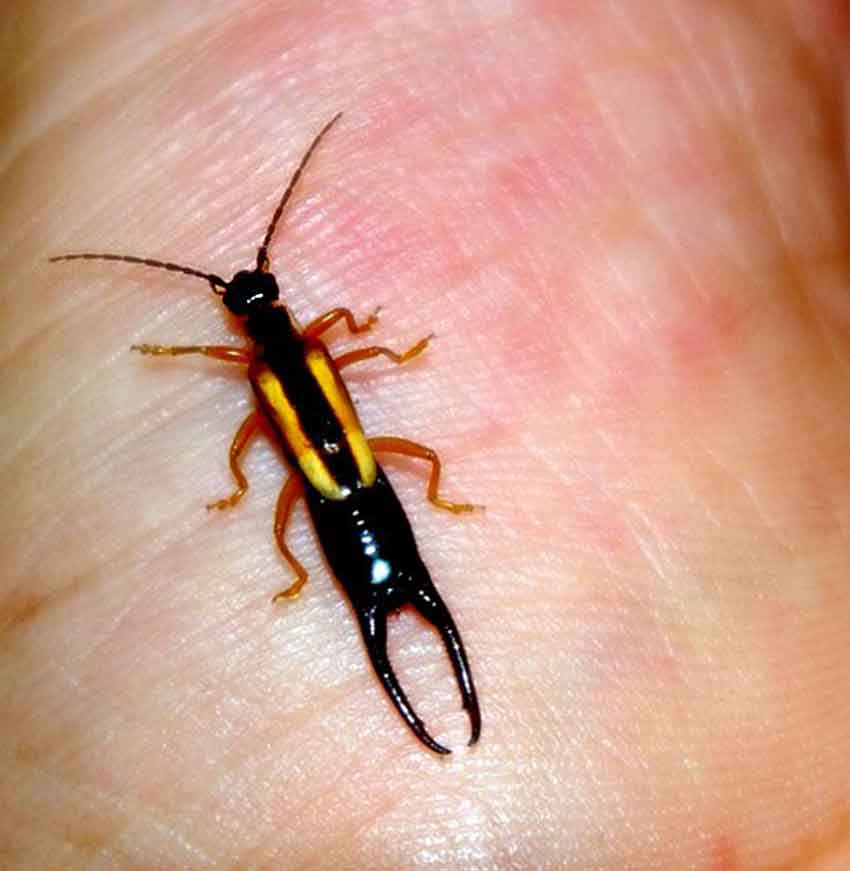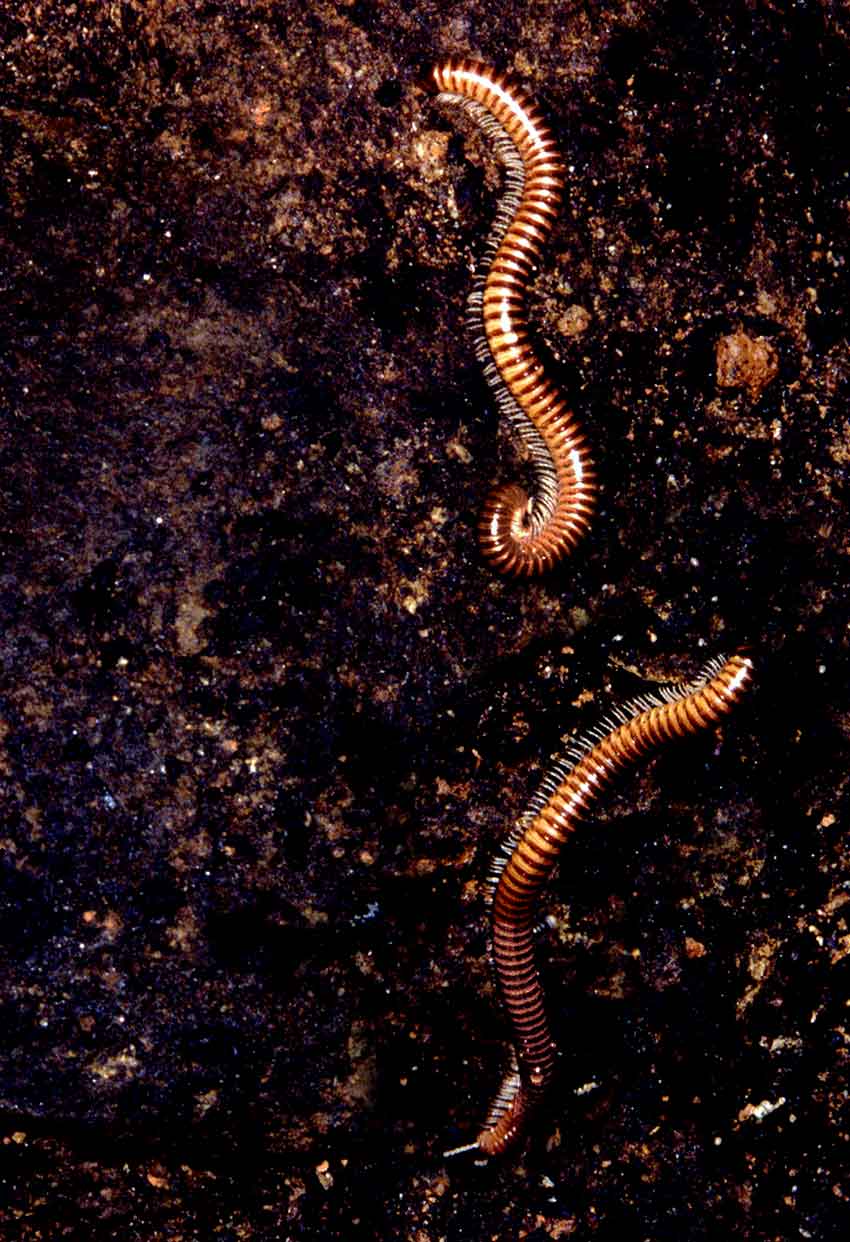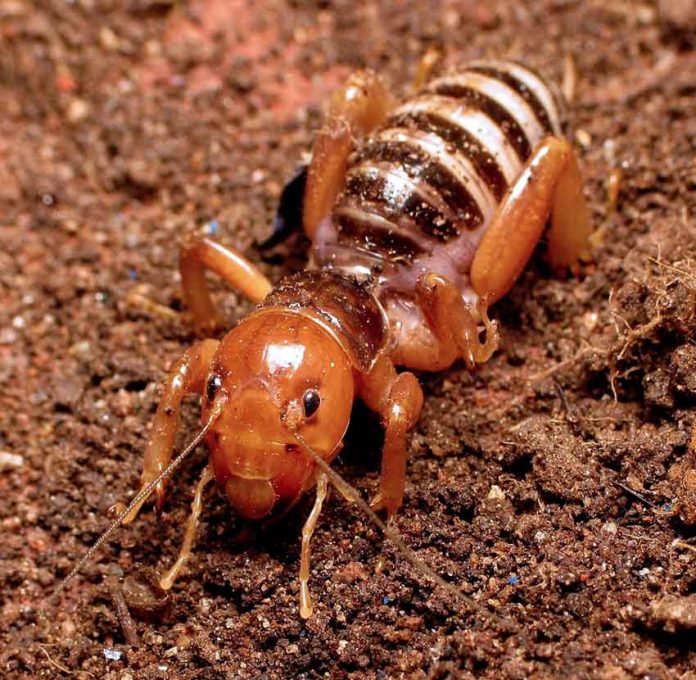In a previous article, I described two inoffensive arachnids: the vinegaroon and the tarantula, both of which you might easily find creeping across your dining room floor if you happen to live in Mexico. Below, I will add a few more harmless creatures I never came across as a boy growing up in Milwaukee. These all may look scary, but the worst they’ll do is leave a bit of a stink behind them.
The tailless whip scorpion
(tendarapo, cancle, araña látigo, limpia casas)
Talk about a totally misnamed creature! This is not a whip scorpion (vinegaroon) without a tail, nor is it a scorpion of any sort.
No, this is a kind of arachnid called an amblypygid, which is completely non-poisonous and — precisely because of this — is extremely timid.
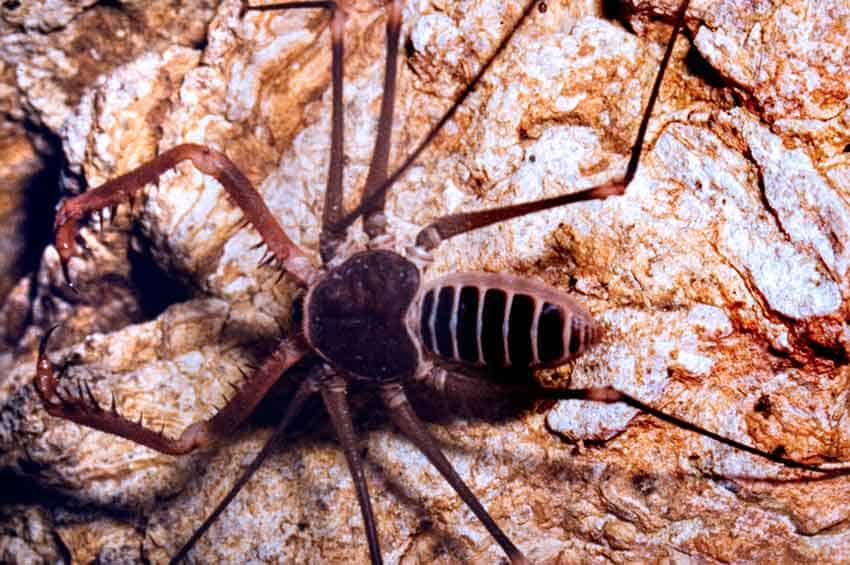
It’s also nocturnal, so if you ever see one at all, it will most likely be in the beam of your flashlight while wandering about at night in a jungle … or at any time at all inside a cave.
Yes, there is no experience quite like crawling along in a narrow, low cave passage you can barely squeeze through and then glancing upward to discover a huge tendarapo on the ceiling just a few inches above your head. Have no fear, however! If you don’t drop dead from a heart attack the first time, you will soon become completely accustomed to tendarapos because, after bats, they are the most common creature to be seen in Mexican caves.
Now, if you happen to have a tailless whip scorpion living in your house, count yourself lucky. They are not called limpia casas (house cleaners) for nothing. You can be sure your home will be entirely free of cockroaches if you have a tendarapo in residence.
The Jerusalem cricket
(cara de niño, madre de alacrán, niño)
You push your garden tool into the ground to loosen the soil and — horror of horrors! You come up with — a cara de niño (baby face). What should you do?

Mexican folk tales claim that this widely feared creature has the very face of the devil himself painted on its stomach and that its “extremely poisonous” bite may be lethal, especially to babies. Other legends claim it’s really an atomic ant and that if it bites you on the knee, you will never walk again.
None of the above is true. What you found lurking in your garden is not exactly a cricket and definitely not from Jerusalem since it’s native to the Americas.
It is definitely not poisonous, but it does possess some powerful mandibles which it uses to chew on roots and tubers. With these, the Jerusalem cricket could give you a painful bite should you try to hurt it. Because of this, I guess it’s not fair to say this curious-looking creature is totally harmless to human beings — but then again, your dog or cat might also give you a nip if you tried to torture them.
Like the tendarapo, the cara de niño is nocturnal and could grow to a length of five centimeters. Although it is not a proper cricket, it’s a close relative of them and makes an almost inaudible chirp by rubbing its back legs against its abdomen.
If you are curious why this insect is said to be from Jerusalem, so was entomologist David B. Weissman, who followed up on numerous explanations, most of which he found rather unconvincing. Finally he got a believable theory from University of California biologist Richard L. Doutt, who noted that the expression “Jerusalem!” was a popular swear word among kids of the 19th century (maybe like “gee whiz,” which was originally a substitute for the name of Jesus). “Imagine,” says Weissman, “a rural boy in the western United States turning over a rock and in surprise, shouting ‘Jerusalem! What a cricket!’”
A final warning: this creature, greatly feared on ranchos but considered a god by the Hopi, actually does possess a weapon: bother it enough and it will emit a stinky smell.
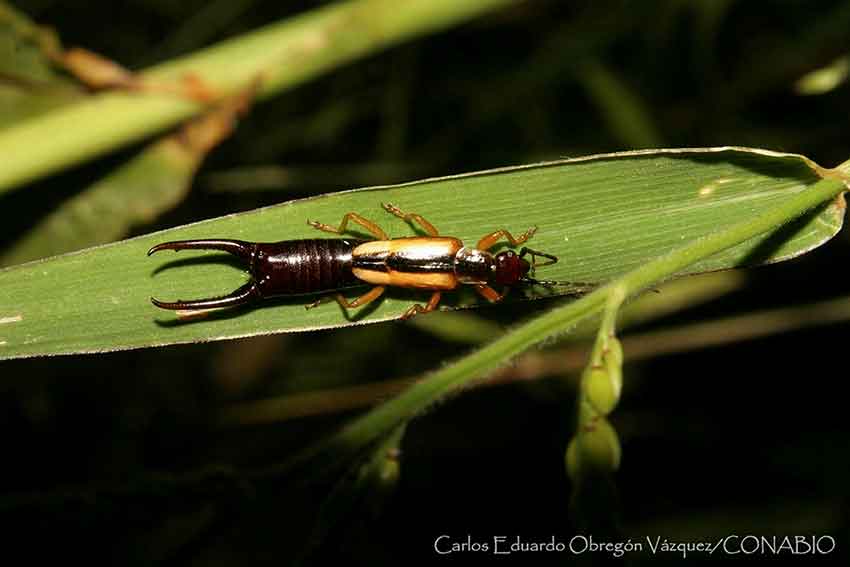
Earwig
(tijerilla)
Back in the days when we didn’t allow spiders to freely roam our house, we experienced yearly invasions of tijerillas, a name which means “little scissors.” We would find them everywhere. Open a book and an earwig would fall out. Peek into a crack or a slot and there you’d see the caliper-like tail of an earwig sticking out of it. And if you turned on a faucet, it would first regurgitate a few tijerillas along with the water.
That was our situation during some 20 years, and one thing I learned was that the earwig may be annoying, but it is harmless. Folktales, as usual, present a very different picture of this streamlined little insect.
“Many people,” says a National Autonomous University (UNAM) report, “have the belief that if an earwig gets close enough to you, it may decide to enter your ear, cut a hole in your eardrum with its formidable pincers, crawl through your ear canal and lay an egg in your brain.”
In reality, it seems that the dangerous looking pincer tail is mainly used for grooming and holding on to a sex partner. “Yes, it can pinch you if you bother it,” says UNAM, although during my 20 years of knowing them up close, not one has ever bothered to nip me.
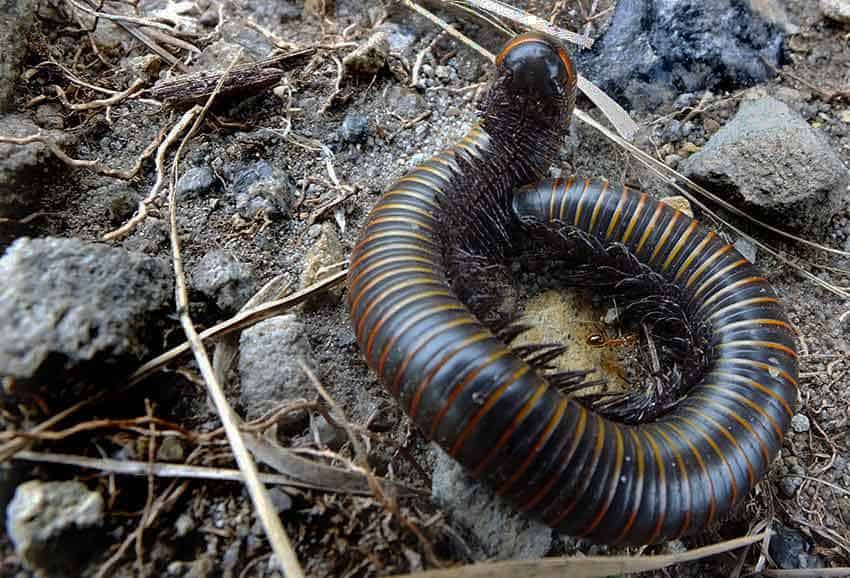
Millipede
(milpies)
You may not find this one in your living room, but if you do any hiking at all, you will surely run into them. Since they look something like centipedes with too many legs, you might assume they are poisonous, but, once again, we are dealing with a completely harmless creature: leggy but not lethal.
You may be surprised to learn that millipedes hang out not only in forests and jungles but also in some caves. La Cueva del Altilte has an upper passage that is filled with a gooey mixture of bat guano and water; it’s also hot and steamy up there.
This combination of features appears to be much to the liking of big, light-brown millipedes, hundreds of them. This fact might give you pause while crawling through this passage into the really hot part of the cave if it weren’t for the fact that millipedes represent no danger whatsoever to human beings. Chewing mouth parts they do have but, like the Jerusalem cricket, they dedicate themselves to eating plant material … and, no doubt, to something they find delicious in bat guano.
Millipedes, by the way, have been crawling around this planet for some 400 million years and are among the oldest known land animals. Back then, some of them were over two meters long, yet still quite harmless. A millipede’s main form of defense is to curl up into a tight coil, but, like the Jerusalem cricket, it can also exude a smelly substance to scare off would-be predators.
In case you haven’t come across even one of these creatures, try turning over some big rocks next time you’re walking through the woods. Your caminata may be transformed into an unforgettable experience!
The writer has lived near Guadalajara, Jalisco, for 31 years and is the author of A Guide to West Mexico’s Guachimontones and Surrounding Area and co-author of Outdoors in Western Mexico. More of his writing can be found on his website.
• Do you have any interesting creatures around your house? Send us a photo!
